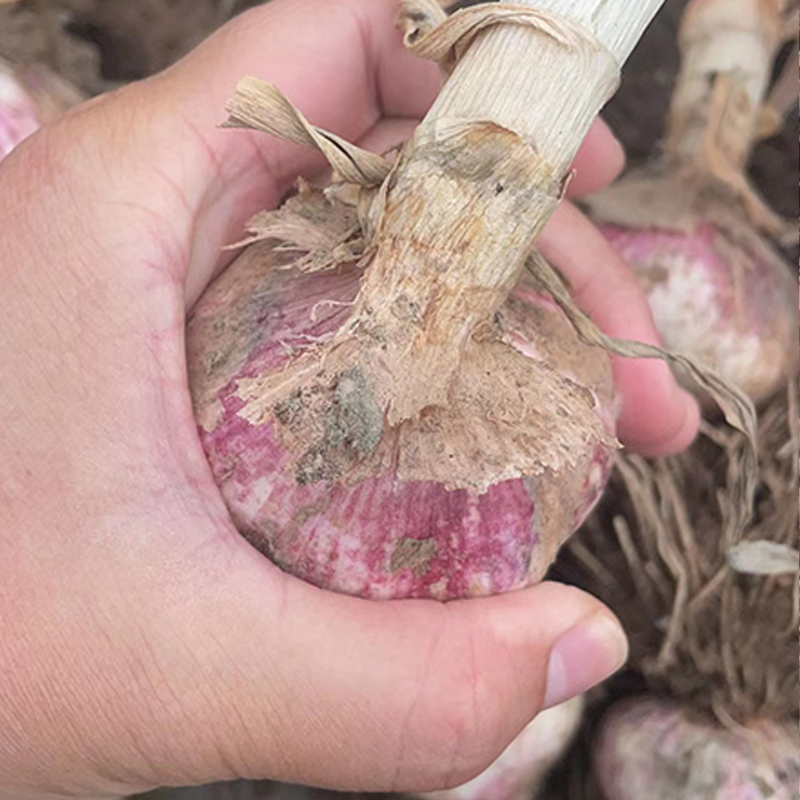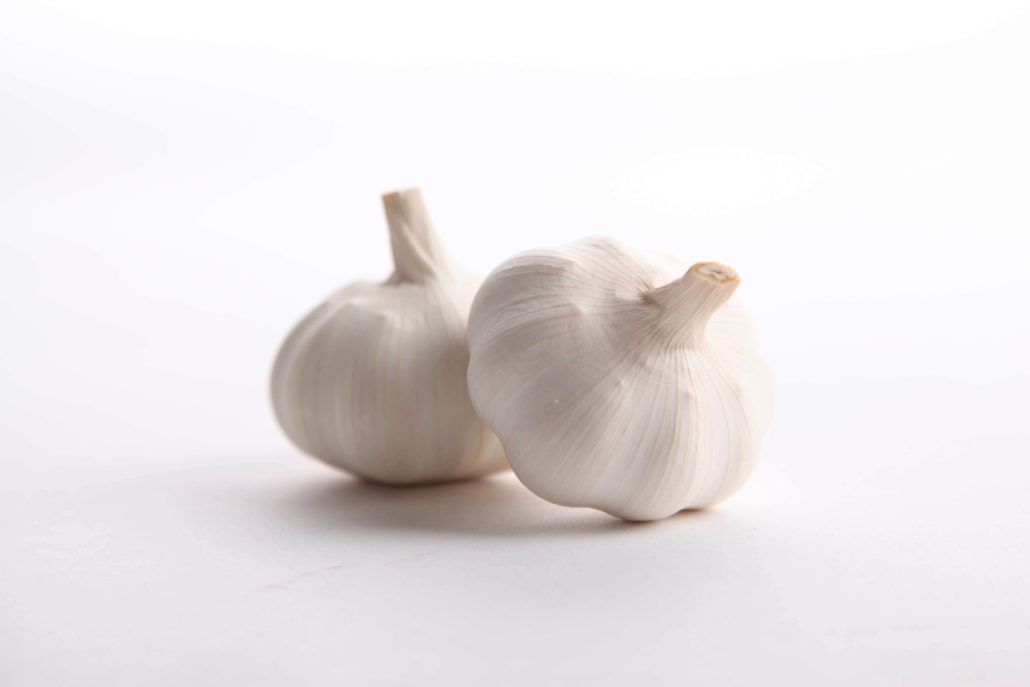When it comes to garlic, I believe everyone is no stranger. Purple garlic is an indispensable ingredient for many delicious foods. This is because of the high nutritional value of purple garlic. Garlic has many benefits, such as a great taste, minerals, antioxidants, and the ability to be processed in different ways. If stored properly, it can also be eaten for months. We widely use garlic all over the world. Over the course of hundreds of years and across continents, many botanists have worked to improve the size, taste, look, and composition of ancient wild garlic.
They changed the original wild garlic into the modern garlic that people all over the world eat by selectively breeding it. To this day, garlic is one of nature’s most valuable foods. Garlic is an essential ingredient in the kitchen. It can remove the fishy smell, improve taste, sterilize, and fight cancer. It can say to be omnipotent. As you might expect, there are different kinds of garlic when you go shopping. There is purple garlic, white garlic, and black garlic. The most common ones are purple garlic and white garlic.
Garlic is a versatile ingredient used in cuisines around the world. Beyond the common white variety, you may also encounter purple garlic. So what’s the difference, and is one better than the other? Let’s compare white and purple garlic to find out.
An Overview of Purple and White Garlic
-
White garlic features white papery outer skins covering the bulbs and cloves. It has a robust pungent flavor when raw that mellows when cooked.
-
Purple garlic has streaks of deep purple on its papery outer skins. It has a bolder, more intense raw garlic punch than white garlic.
Both belong to the Allium genus and provide the savory garlic flavor essential for many dishes But they have some key differences,
Flavor Profile
The most noticeable distinction between the two garlic types is the flavor
-
White garlic has a mildly spicy, pungent taste when raw. It becomes sweeter and more mellow once cooked.
-
Purple garlic is much more assertive raw, with a fiery bite that explodes in your mouth on first taste. It mellows when cooked but retains a bold garlic essence.
So purple packs a more powerful garlic flavor, especially when used raw. Meanwhile, white garlic offers a more subtle, nuanced garlic flavor.
Aroma
Along with flavor differences, purple and white garlic have varying aromas:
-
White garlic has a sharp, zesty garlic scent when raw that sweetens into a more rounded aroma once cooked.
-
Purple garlic has an even stronger sulfur-like garlic punch in its raw aroma. When cooked, it retains a robust garlicky smell.
Purple garlic announces itself more boldly in both taste and aroma compared to the more understated white variety.
Texture and Use
You’ll also notice textural differences between the two types:
-
White garlic cloves are smaller and have a soft, pliable texture. They’re easy to crush and mince.
-
Purple garlic contains larger cloves with a denser, crunchy texture. The firm cloves hold their shape well during cooking.
So purple garlic’s meatier cloves are ideal for prolonged cooking methods that would mush up the smaller white cloves. Both can be used in raw applications like dressings, marinades or toppings.
Nutritional Profile
In terms of nutrition, purple and white garlic are fairly similar:
-
Both are very low in calories, fat, and carbs.
-
They provide manganese, vitamin C, vitamin B6, and some fiber.
-
Garlic’s main health benefit comes from allicin, a sulfur compound with antioxidant and anti-inflammatory effects.
Overall, purple and white garlic have comparable nutritional value, so neither has a significant edge.
Growing Conditions
You can grow both types of garlic from individual cloves planted in fall and harvested in summer:
-
White garlic thrives in well-draining soil and full sun. It grows well in a wide range of climates.
-
Purple garlic also needs full sun but prefers slightly cooler temperatures than white garlic. It tolerates drier conditions.
Both are relatively easy-to-grow, productive vegetable garden crops.
Cost Factor
In terms of price:
-
Conventional white garlic is widely available year-round at grocery stores for $2-3 per bulb or less. Organic commands a small premium.
-
Specialty purple garlic is harder to find. It costs $3-6 per bulb at farmer’s markets or high-end grocers when in season.
So pound for pound, purple garlic runs 1.5 to 2 times the cost of conventional white garlic. But it delivers a bigger flavor bang for the buck.
Favorite Uses
-
White garlic is ideal when you want subtle, background garlic essence without it dominating. It excels in sauces, dressings, aioli and roasted whole.
-
Purple garlic pairs well with robust flavors like red meat, mushrooms and wintry stews. It can hold its own in stir fries, compound butters and marinades.
The Final Verdict
While personal taste will dictate preference, purple garlic edges out white thanks to its intensely bold, lingering flavor and large cloves that add texture. Purple garlic announces itself loudly and proudly in each bite. However, white garlic has its place when you want a supporting garlic role. For maximum flavor impact, go purple. But keep white garlic on hand for its flexibility in both raw and cooked preparations. With its beautiful color and full flavor, purple garlic deserves a spot in any garlic lover’s kitchen.

What is the difference between purple garlic vs white garlic
Garlic contains protein, vitamins, fiber, phosphorus, iron, calcium, and other mineral nutrients. Modern medical research says that purple garlic has almost the same nutrients as white garlic, with the exception of an anthocyanin nutrient. Anthocyanin’s main job is to protect cells from damage. Additionally, scientists have discovered that garlic with a purple skin has higher amounts of allicin and stronger antibacterial effects. This is why purple-skinned garlic is more effective than white-skinned garlic when people eat garlic raw. Spicy reason.
Now that we’ve talked about the differences between purple and white garlic, let’s talk about how to eat garlic. Whether you’re eating purple or white garlic, you should make sure you do it right. If you don’t, no matter how much you eat, it won’t work.
Allicin has a strong antiseptic effect. However, allicin loses its effect quickly after heating. So it is better to eat raw garlic than cooked garlic.
Nutritional value of purple garlic vs white garlic

That’s because purple garlic has stronger antibacterial and antioxidant effects than white garlic. This makes purple garlic taste spicier.

White garlic will have more of the elements selenium and germanium, which can help the body work better.
White vs. Purple Garlic: What’s the Difference? #Shorts
FAQ
What are the benefits of purple garlic?
Which type of garlic is the healthiest?
Does purple garlic have more allicin?
Is purple garlic better than white garlic?
Purple garlic can be used just like white garlic. Since it has a slightly milder flavor, it won’t overwhelm a dish when raw (think minced into a salad dressing or rubbed on toasted bread). Some also say that purple garlic’s flavor lingers longer after cooking than white garlic. We say that’s reason enough to do a side-by-side comparison.
Are garlic pills as effective as fresh garlic?
The literature does not present data identifying if garlic pills offer similar benefits as fresh garlic. It is recommended to have variety within one’s diet to gain nutritional benefits from different foods including garlic.
Is consuming purple garlic good for you?
Purple garlic is an indispensable ingredient with great nutritional value. It offers benefits such as a great flavor, antioxidants, minerals, processing flexibility, and can be consumed for months when stored properly. Garlic, including the purple variety, is widely used around the world.
Are purple garlic cloves juicier than white garlic?
The cloves grow around this stalk and tend to be all the same size — a bit larger than white garlic cloves. Purple garlic cloves are “juicier” and have a milder flavor than white garlic when fresh. You might see purple garlic in some supermarkets, but it’s more likely to be found in specialty markets and at farmers’ markets.
What does purple garlic look like?
Purple garlic has a purple hue to its papery skin, though the inner cloves are the same color as white garlic cloves. It comes from a variety called hardneck garlic: There’s a woody stalk that grows right through the center of each bulb. The cloves grow around this stalk and tend to be all the same size — a bit larger than white garlic cloves.
Where can I buy purple garlic?
In Houston, Dallas, and South Texas, there are dedicated markets where purple garlic can be easily found. (Tips to Remove Garlic Smell From the Fingers: Rub your fingers against the sides or faucet of the stainless steel sink of your kitchen while washing your hands.)
- The Ultimate Guide to Growing Strawberries in Raised Beds - August 8, 2025
- No-Dig Garden Beds: The Easiest Way to Grow a Beautiful Garden - August 6, 2025
- How to Protect and Preserve Wood for Raised Garden Beds - August 6, 2025
